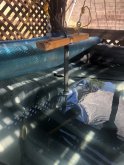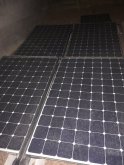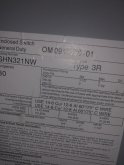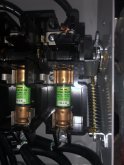So I was watching David Poz on YouTube and saw his hot water video and decided to try building a similar system to preheat my spa. So I bought 4 used 305w Sunpower Solar Panels (~60v at ~5.9amps) @$90 each, a Camco 04382/04383 1500W 240V Universal Flange Water Heater Element - High Watt Density @$11, a used Murray ghn321nw 30 amp 240vac/250vdc disconnect switch with fen-r-30 fuses @$10 and some InstallGear 8 Gauge wire @$33. I got it all installed (panels in series for ~240vdc @ ~5.9 amps) At the terminals when the disconnect switch is in the off position, but when I throw the switch to the on position there’s nothing...any ideas why that is? Are the fuses interfering somehow? I checked for continuity before connecting the solar panels to the disconnect switch and there’s no resistance so...?
Attachments
-
 ACAD29BD-0A83-4184-B555-50E9DBEF198B.jpeg138.5 KB · Views: 12
ACAD29BD-0A83-4184-B555-50E9DBEF198B.jpeg138.5 KB · Views: 12 -
 29D1B5A2-6F41-4A31-9B92-A40DE7F219F6.jpeg129.9 KB · Views: 12
29D1B5A2-6F41-4A31-9B92-A40DE7F219F6.jpeg129.9 KB · Views: 12 -
 038E55BF-7FC0-4A49-B34E-4C4FE8B25802.jpeg75.6 KB · Views: 12
038E55BF-7FC0-4A49-B34E-4C4FE8B25802.jpeg75.6 KB · Views: 12 -
 25A316D7-E5EB-444E-A012-A9451552BA22.jpeg110.8 KB · Views: 14
25A316D7-E5EB-444E-A012-A9451552BA22.jpeg110.8 KB · Views: 14 -
 F5AB26EB-D91F-4B6F-8F3F-CCF794DA90BB.jpeg112 KB · Views: 14
F5AB26EB-D91F-4B6F-8F3F-CCF794DA90BB.jpeg112 KB · Views: 14


